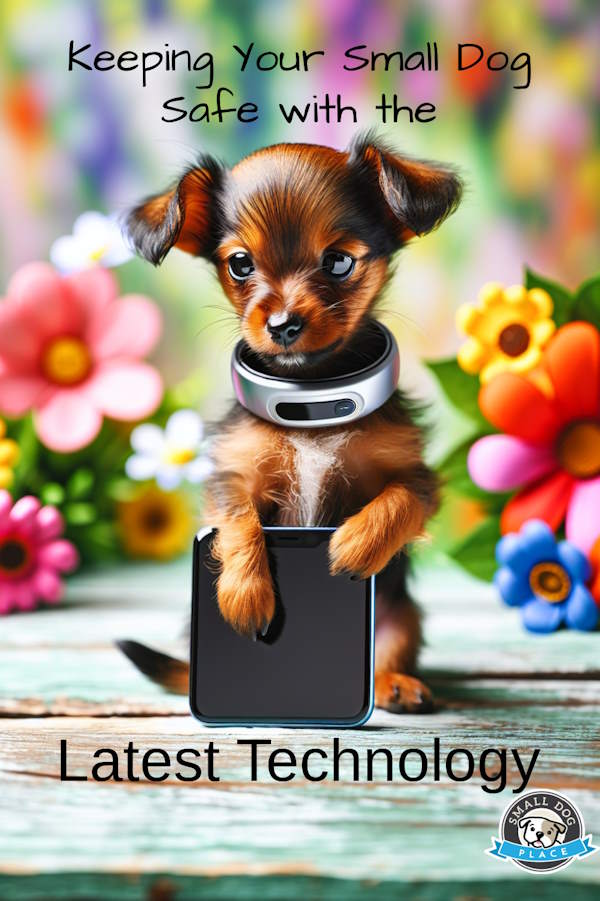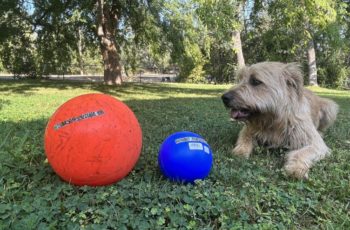In recent years, the way we care for our pets has been revolutionized by technological advancements. Among the most notable of these innovations is the need to get a GPS dog collar, a tool that’s rapidly becoming indispensable for pet owners.
This technology not only helps in keeping our pets safe but also offers peace of mind that was previously hard to come by. For owners of small dog breeds, these technological aids can be especially beneficial, considering their unique safety and health needs.

What makes GPS dog collars special?
GPS dog collars are more than just modern conveniences; they represent a significant leap forward in managing the safety and well-being of our pets.
By utilizing satellites to pinpoint your dog’s location in real time, these collars offer a way to monitor your pet’s whereabouts with unprecedented accuracy. This is particularly valuable for small dog owners, as their pets can sometimes escape unnoticed through small gaps in fences or doors.
Beyond location tracking, these collars often include features like geofencing, which allows pet parents to set safe zones. If a pet wanders beyond these designated areas, the owner receives an alert. This combination of technologies provides a multifaceted approach to pet safety and management.
Additionally, the variety of designs and styles available means that GPS dog collars can be tailored to suit the individual personality of your small dog, as well as your aesthetic preferences.
Beyond the practical safety aspects, these collars have become a modern accessory for pets, combining function and fashion. With a GPS dog collar, your small dog can stay safe while also looking chic and up-to-date, showcasing how pet safety gear has evolved to embrace contemporary trends in pet care.
Exploring the world of geofencing
Geofencing stands as a core feature of many modern pet collars, creating virtual boundaries that can be customized to your living environment. Whether you’re setting up a perimeter around your home or a park you frequently visit, geofencing ensures that your dog stays within safe confines without the need for physical barriers.
Imagine the peace of mind knowing that if your adventurous little companion decides to explore beyond the fence, you’ll be immediately notified. This feature is a game-changer for pet safety, especially in urban areas where traffic poses a constant threat to curious pets.
Furthermore, geofencing is not only a preventive measure; it also serves as a diagnostic tool that helps in understanding your pet’s behavior.
By analyzing the times and frequency your small dog attempts to leave the geofenced area, you can gain insights into their behavior patterns and address any underlying issues, such as separation anxiety or boredom, which could be prompting their desire to escape the safety of their known environment.
The synergy of training and tech
Today’s innovative dog collars do more than just monitor location; they seamlessly integrate training tools to offer a comprehensive pet management solution.
For instance, some collars use gentle vibrations or sound cues as part of a positive reinforcement training strategy. This can be particularly effective for small breeds that may be more sensitive to traditional training methods.
By combining technology with training, these collars help reinforce good behavior while ensuring pets stay within safe boundaries.
This dual functionality exemplifies how modern technology can support traditional pet care practices, benefiting both pets and their owners.
Moreover, these advanced collars often come with companion apps that provide detailed training tutorials and tips in sync with the collar’s technology.
The synchronization of the app and collar allows for a smooth training experience that can be particularly helpful for new pet owners who are still learning about their small dog’s needs and responses.
This cohesive approach ensures that pet owners are not only equipped with the right tools but also with the knowledge to use them effectively.
Choosing the right collar for your small breed
Given the specific needs of small dog breeds, selecting the right GPS collar is crucial. Factors to consider include the collar’s weight, battery life, and whether it has features that cater to the size and sensitivity of small dogs.
A collar that’s too heavy or bulky can be uncomfortable for a smaller dog, potentially hindering its movements or causing distress.
Additionally, considering the adjustable settings for geofencing alerts and training cues is important, as these should be appropriate for the temperament and size of your pet. The goal is to enhance your pet’s safety without compromising their comfort or well-being.
The broader impact of GPS on pet care
The introduction of GPS technology into pet care has initiated a significant shift in how we manage the safety and health of our furry friends.
Compared to traditional leashes, fences, and manual supervision, GPS collars offer a level of safety and freedom that was previously unattainable.
Owners can now enjoy the peace of mind of knowing their pet’s location at all times, effectively reducing the risk of lost pets. As we look to the future, it’s clear that technology will continue to play a vital role in redefining pet care, offering new opportunities for improving the lives of small dog breeds and their human companions alike.
Personal stories of peace and protection
Many small dog owners have found solace and security in the capabilities of GPS dog collars. From stories of lost pets being found within minutes to owners being alerted before their furry escape artist got too far, the testimonials are both heartwarming and convincing.
Beyond the tangible benefits, the emotional relief of knowing you have a digital safeguard in place is invaluable.
For those considering this technology, integrating these tools into your pet’s life means investing in their safety and overall happiness, ensuring they remain by your side for years to come.
Last Words
In conclusion, as we continue to see significant advancements in pet care technology, it’s crucial for pet owners, especially those with small breeds, to stay informed and consider how these innovations can be integrated into their daily lives.
By leveraging tools like GPS dog collars, the promise of a safer, healthier, and happier life for our pets is not just a wish; it’s becoming a reality. In the evolving landscape of pet safety, embracing pet technology is not just smart; it’s essential for the well-being of our cherished companions.
Latest in Pet Technology:
Pin for Future Reference
 Latest in Pet Technology
Latest in Pet TechnologyAbout Janice (author and voice behind this site)
Having lived with dogs and cats most of her life, Janice served as a veterinary technician for ten years in Maryland and twelve years as a Shih Tzu dog breeder in Ohio.
Her education includes undergraduate degrees in Psychology with a minor in biology, Early Childhood Education, and Nursing, and a master’s in Mental Health Counseling.
She is a lifelong learner, a dog lover, and passionate about the welfare of animals. Her favorite breed for over 50 years has been the Shih Tzu, but she has also lived with Poodles, Maltese, Yorkshire Terriers, Beagles, English Bulldogs, Carin Terriers, and a Cocker Spaniel.
When not writing, reading, and researching dog-related topics, she likes to spend time with her eight Shih Tzu dogs, husband, and family, as well as knitting and crocheting. She is also the voice behind Miracle Shih Tzu and Smart-Knit-Crocheting
Does This Article Deserve Your Thumbs Up?
We always appreciate your support and encouragement. Your thumbs up means so much to us. Please like this article.
If you find this page or any page on Small Dog Place Helpful, or useful in anyway, I’d love it if you would click the small heart found on the bottom right of each page.
You can also share or bookmark this page — just click on the:

Free Monthly Newsletter
Sign Up for Our Free Newsletter and get our Free Gift to You.
my E-book, The Top 10 Mistakes People Make When Choosing a Dog (and how to avoid them)


